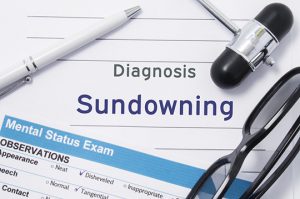Oh, those medication and IV calculations! Whether you’re studying for your NCLEX, or an experienced nurse suddenly faced with figuring a dose manually, it’s important to remember that the final responsibility of keeping patients safe belongs to the nurse. Accurate medication calculation is a fundamental nursing skill that can never be fully replaced by technology.
Every nurse can recite The Five Rights of Medication Administration:
- Right patient
- Right drug
- Right dose
- Right route
- Right time
Technology, such as automated dispensing cabinets, bedside bar code scanning and smart infusion pumps have helped reduce medication errors. Yet backup methods are essential, including old-fashioned medication calculations, in the event of power failures, disasters, and—always--to serve as the final accuracy check before administering any drug.
Universal Formula Method
Also called the “desired over have” formula, there are three components:
- Desired amount (D) is the prescribed dose (mg, g, mL, etc.)
- Amount on hand (H) is the available dose or concentration
- Form and amount of the drug (volume [V] or quantity [Q]) (tablets, capsules, liquid)
Practice questions:
Q1. A health care provider (HCP) prescribes 8.0 mg IM of a medication. The pharmacy sends a vial with a label "10 mg/mL." How much of the medication will the nurse draw up in the syringe?
A1. Desired ÷ Available x Volume = mL per dose. To calculate: 8.0 mg/10 mg x 1 mL = 0.80 mL medication drawn up in the syringe.
Q2. A client has been taking a warfarin 5 mg tablet every day. Following a routine international normalized ratio (INR) test, the health care provider (HCP) increases the client's dose to 7.5 mg PO daily. How many (scored) tablets should the nurse instruct the client to take each day?
A2. The client will take 1.5 tablets every day. To calculate: Divide the desired dose by the dose on hand (or available) For this question: 7.5 ÷ 5 = 1.5 tablets.
Q3. The home health nurse is visiting a client with a temperature of 101.4°F (38.6°C). There is a standing prescription for acetaminophen suppository 1 gm PR q 6 hr PRN for temp >101°F (38.3°C). The client has a supply of 325 mg scored acetaminophen suppositories. How many suppositories should the nurse administer?
A3. The nurse will administer 3 suppositories. To calculate: Use the (desired amount x vehicle amount) ÷ (amount on hand or available) formula. 1 gm = 1000 mg. For this question: 1. 1 gm x 325 mg = 0.003 gm. 2. 0.003 x 1000 mg = 3 suppositories.
Q4. A health care provider (HCP) prescribes digoxin 0.5 mg IV daily. Digoxin 0.25 mg/mL is available from the pharmacy. How many mL are needed to administer a 0.5 mg dose?
A4. The nurse will administer 2 mL of digoxin IV. To calculate: To calculate: Divide the desired dose by the dose on hand (or available). 0.5 mg ÷ 0.25 mg X 1 mL = 2 mL digoxin.
Dimensional Analysis Method
Dimensional analysis (DA) is used to solve problems with different units of measurements. All measurements are converted to equivalent units. It does not require memorization of specific formulas.
Dimensional analysis can be used for all dosage calculations and is especially helpful when determining weight-based dosing and complex IV infusions. Many nursing professionals claim this is the ONLY method they use to calculate dosages.
ORDER | X | CONVERSION | = | Calculation | = | NEED |
- To set up the equation, start with the label or unit of measure needed in the answer. Put that in the far-right box.
- Build the equation by placing information with the same label as the preceding denominator in the conversion numerator so that unwanted labels will cancel out. Repeat until all units of measure not needed in the answer are cancelled out.
- Calculate to determine the correctly labeled numeric answer. Don’t round any numbers in the equation until you have the final answer.
Let’s do a dimensional calculation problem together:
The health care provider (HCP) prescribes omeprazole 40 mg PO bid before meals for a client with a diagnosis of gastroesophageal reflux disease (GERD). The nurse only has 20 mg capsules on hand. How many capsules will the nurse administer? (Answer: 2 capsules)
ORDER | X | CONVERSION | = | Calculation | = | NEED |
40 mg |
| 1 capsule |
| 40 |
| Capsules |
1 dose |
| 20 mg |
| 20 |
| 2 |
Practice questions:
Q1. A pediatrician prescribes nystatin oral suspension 250,000 units PO q 6 hr for a child with a thrush (candidiasis) infection. The standard oral suspension has 100,000 units/mL. How many mL will be in a dose?
A1. The nurse will administer 2.5 mL for each dose.
ORDER | X | CONVERSION | = | Calculation | = | NEED |
250,000 units |
| 1 mL |
| 250,000 |
| mL |
1 dose |
| 100,000 units |
| 100,000 |
| 2.5 |
Q2. The health care provider (HCP) prescribes heparin 6,789 units subcutaneously q 12 hr. The nurse has a vial of heparin with 10,000 units/mL. How many mL will the nurse draw up and administer? Round the answer to one decimal place.
A2. The nurse will draw up and administer 0.7 mL. (Round 0.678 to 0.7)
ORDER | X | CONVERSION | = | Calculation | = | NEED |
6,789 units |
| 1 mL |
| 6,789 |
| mL |
1 dose |
| 10,000 units |
| 10,000 |
| 0.7 |
Q3. A new medical student prescribes 872 mL of Ringer's Lactose to infuse over 684 minutes. At what flow rate will the nurse set the IV infusion pump? Round to one decimal place.
A3. The nurse will set the IV infusion pump to 76.5 mL/hr. (Round 76.49 to 76.5)
ORDER | X | CONVERSION | = | Calculation | = | NEED |
872 mL |
| 1 hr |
| 872 |
| mL/hr |
1 dose |
| 684 min (11.4 hr) |
| 11.4 |
| 76.5 |
Q4. A client weighing 64 kg, with a diagnosis of streptococcal endocarditis, is prescribed streptomycin IM 1.25 mg/lb IM q 12 hr. Streptomycin is available as 0.35 gm/2.3 mL. How many mL will the nurse administer? Round to two decimal places.
A4. The nurse will administer 1.16 mL. Start by converting 64 kg to pounds (64 x 2.2 = 140.8 lb) Next, convert gm to mg (0.35 gm = 350 mg). Round 1.1565 to 1.16.
ORDER | X | CONVERSION | = | Calculation | = | NEED |
176 mg |
| 2.3 mL |
| 404.8 |
| mL |
1 dose |
| 350 mg |
| 350 |
| 1.16 |
Tips for Medication Calculations
- Ask yourself: Does this dose make sense clinically?
- Do the calculation at least twice to make sure the dose is correct.
- When in doubt, contact the pharmacy to verify.
INTRAVENOUS (IV) INFUSION CALCULATIONS
Administering intravenous fluids and medications can be complicated by extra calculations, such as drop rates and infusion times. IV pumps are extremely helpful in maintaining a steady infusion rate, but the nurse should always be able to manually calculate how long any type of parenteral therapy takes.
Drip Rate Formula
Drip Rate: the infusion volume is calculated into drops. The formula is simple:
Example: Administer 1 L (1000 mL) over 8 hours. Using the Drip Rate Formula, 1000 mL ÷ 8 h = 125 mL/h.
When the drip rate is prescribed in minutes, convert the time to hours by dividing the required minutes by 60.
Example: Administer 100 mL over 30 minutes. Using the Drip Rate Formula, 100 mL ÷ 0.5 h = 200 mL/h.
Practice questions:
Q1. Following a client's surgical procedure, the health care provider (HCP) prescribes 1L D5/.45% NS to infuse in 18 h by IV pump. What is the flow rate in mL/h?
A1. The flow rate is 55.5 mL/hr. The first step is to convert 1L to 1000 mL. Then the Drip Rate Formula can be used: 1000 mL ÷ 18 h = 55.5 mL/hr.
Q2. The health care provider (HCP) prescribes 1 L of D5/0.9% NS to infuse over 8 h. What hourly rate should the infusion pump be set at?
A2. The infusion pump should be set at 125 mL/h. Use the Drip Rate Formula: 1000 mL ÷ 8 h = 125 mL/h.
Q3. A new medical student prescribes 779,123 mcL of 0.9% Normal Saline to infuse over 14.2 h. What is the flow rate in mL/hr? Round to one decimal place.
A3. Because the nurse is adept at IV infusion calculations, the nurse quickly calculates a flow rate of 54.9 mL/hr. Using the Drip Rate Formula: First, convert 779,123 mcL to 779.123 mL. Next, 779.123 mL ÷ 14.2 h = 54.867 mL/h. Round to 54.9 mL/hr. NOTE: This is a humorous problem, with huge numbers, but it demonstrates that once you have the correct units, the solution is easy.
Q4. The nurse on a surgical unit is caring for a post-operative client who is recovering without complications. At 9:30 am (0930), the surgeon writes an order to decrease the current IV infusion rate to 50 mL/hr, then discontinue IV access. There are 250 mL remaining in the IV bag. What time will the infusion be complete?
A4. The infusion will be complete at 2:30 pm (1430). Using the Drip Rate Formula, 250 mL ÷ 50 = 5 hours. Five hours from 0930 is 1430. NOTE: In this case, the drip rate is known (50 mL/h), so the equation looks like this: 50 mL/hr = 250 mL ÷ x.
Calculating Drip Rates in Drops
An IV drop factor reflects the specific size of the drops of IV fluid that the tubing set creates. This is a predetermined number based on the tubing required and available to administer the medication.
There are two standard tubing sizes:
- Macro Drop Factor: 20 drops in 1 mL (20 gtts/1 mL)
- Micro Drop Factor: 60 drops in 1 mL (60 gtts/1 mL)
Don’t be intimidated if you’re asked to calculate an IV rate in drops per minute (dpm). It’s just one more small step in the formula:
Example: The nurse is preparing to administer 1L of Lactated Ringers over 12 hours. The drop factor is 60 drops (gtt or gtts) per mL. What is the drip rate (dpm)? Round to a whole number.
- dpm = (1000 mL ÷ 12 h) X (60 gtts/mL ÷ 60)
- dpm = 83.8333 ÷ 1
- dpm = Round to 84 gtts/min
Practice questions
Q1. The nurse will administer 1 L of normal saline over 10 hours. No infusion pumps are available. The IV tubing has a drop factor of 20 gtts/mL. How many drops per minute (dpm) should be infused? Round to a whole number.
A1. The nurse should manually adjust the IV tubing to deliver 33 gtts/min.
- dpm = (1000 mL ÷ 10 h) X (20 gtts/mL ÷ 60)
- dpm = 100 X 0.333 = 33.3 gtts/min
- dpm = Round to 33 gtts/min
Q2. The nurse is monitoring an infusion of D5/0.45% NS at 120 mL/hr. The drop factor is 15 gtts/mL. What drip rate should the nurse set the IV pump at? Round to a whole number.
A2. The drip rate is 30 gtts/min.
- dpm = (120 mL ÷ 60 min) X (15 gtts/mL ÷ 1 min)
- dpm = 2 x 15 = 30
- dpm = 30 gtts/min
Q3. The health care provider (HCP) prescribes two 250 mL units of packed red blood cells (PRBC) to infuse over 4 hours. The drip factor is 15 gtts/mL. What is the IV flow rate? Round to a whole number.
A3. The flow rate is 31 gtts/min.
- dpm = (500 mL ÷ 4 hr) X (15 gtts/min ÷ 60 min)
- dpm = 125 X .25 = 31.25
- dpm = Round to 31 gtts/min
Q4. The client is scheduled to receive a prescription of 300 mL of ampicillin sodium 500 mg to infuse over 40 minutes. The drip factor is 20 gtts/mL. What will the nurse set the IV infusion pump at?
A4. The nurse will set the pump at 150 gtts/min.
- dpm = (300 mL ÷ 40 min) X (20 gtts/mL ÷ 1 min)
- dpm = 7.5 X 20 = 150
- dpm = 150 gtts/min
The Key to Success: Practice, Practice, Practice!
One of the most important responsibilities of being a nurse is the safe and accurate administration of pharmacological therapies. Take time to learn the calculations that work best for you and practice them often. Even if medications and IV fluids are labeled by a pharmacist, you are the final checkpoint—your patients are relying on you to administer the Right medication at the Right Dose by the Right route at the Right time. A few seconds of calculation can make all the difference.
 By
By 



